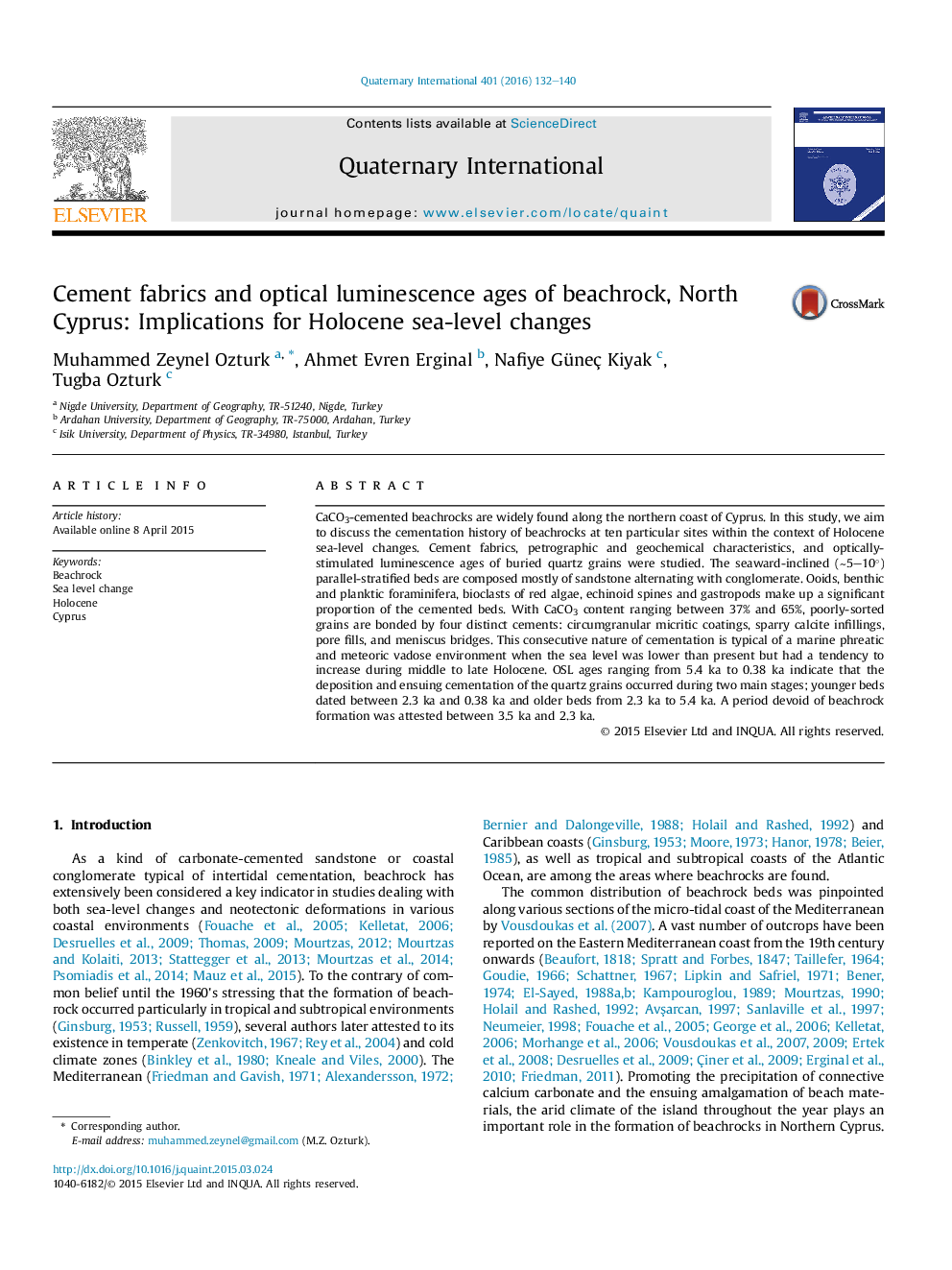| Article ID | Journal | Published Year | Pages | File Type |
|---|---|---|---|---|
| 1040179 | Quaternary International | 2016 | 9 Pages |
CaCO3-cemented beachrocks are widely found along the northern coast of Cyprus. In this study, we aim to discuss the cementation history of beachrocks at ten particular sites within the context of Holocene sea-level changes. Cement fabrics, petrographic and geochemical characteristics, and optically-stimulated luminescence ages of buried quartz grains were studied. The seaward-inclined (∼5–10°) parallel-stratified beds are composed mostly of sandstone alternating with conglomerate. Ooids, benthic and planktic foraminifera, bioclasts of red algae, echinoid spines and gastropods make up a significant proportion of the cemented beds. With CaCO3 content ranging between 37% and 65%, poorly-sorted grains are bonded by four distinct cements: circumgranular micritic coatings, sparry calcite infillings, pore fills, and meniscus bridges. This consecutive nature of cementation is typical of a marine phreatic and meteoric vadose environment when the sea level was lower than present but had a tendency to increase during middle to late Holocene. OSL ages ranging from 5.4 ka to 0.38 ka indicate that the deposition and ensuing cementation of the quartz grains occurred during two main stages; younger beds dated between 2.3 ka and 0.38 ka and older beds from 2.3 ka to 5.4 ka. A period devoid of beachrock formation was attested between 3.5 ka and 2.3 ka.
